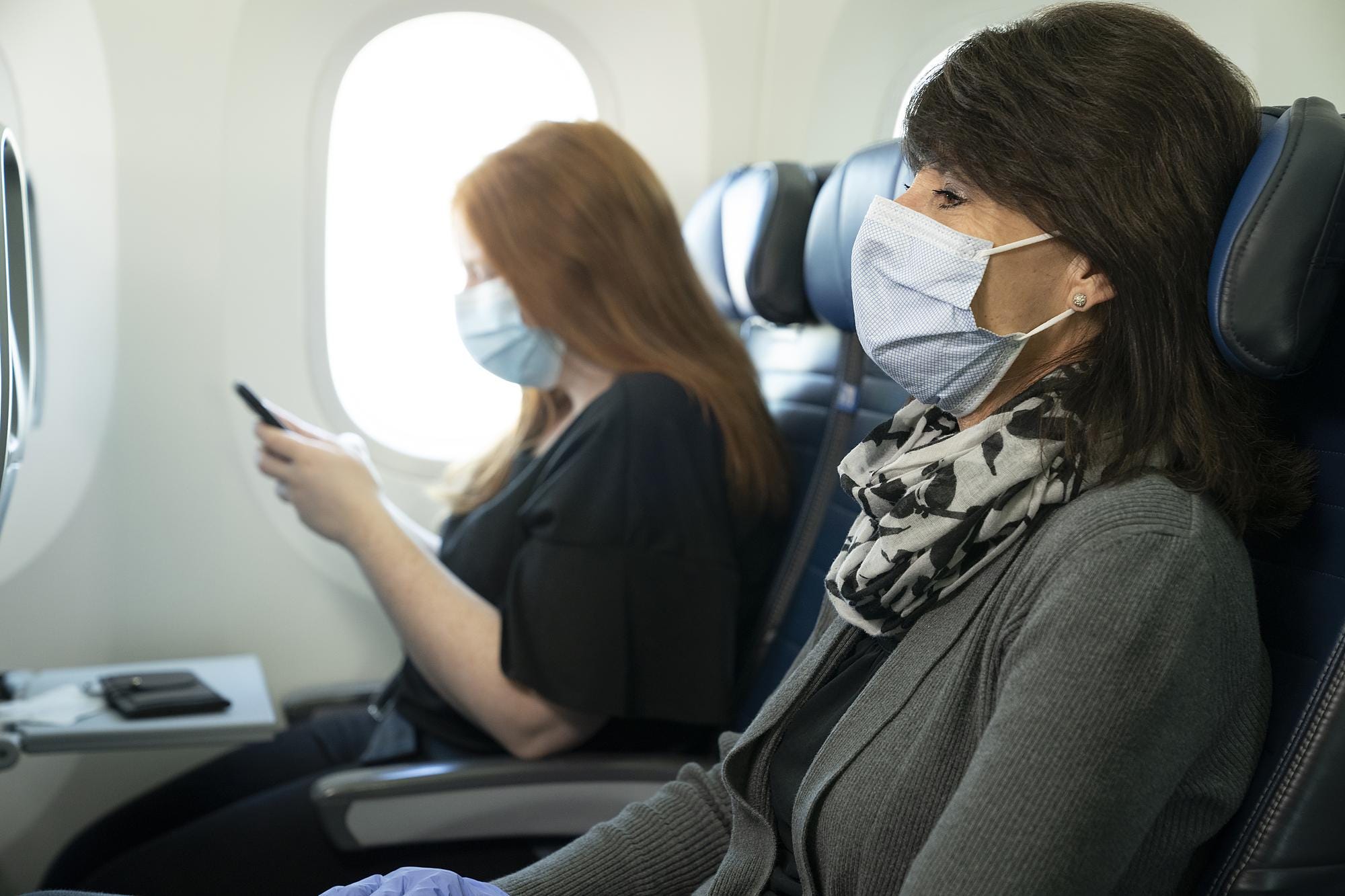
- A CDC study offers even more evidence that the coronavirus spreads on airplanes.
- Epidemiologists traced 16 coronavirus cases back to a single 10-hour flight where one symptomatic passenger was seated in business class.
- The case study showed that 92% of passengers sitting two seats or fewer away from the passenger contracted the coronavirus.
- It’s unlikely most of the passengers on the flight were wearing masks.
- Visit Business Insider’s homepage for more stories.
On March 1, 217 people boarded a plane in London, England, bound for Hanoi, Vietnam.
Healthcare workers had already examined each passenger, asking them to report any potential COVID-19 symptoms and doing temperature scans.
But a 27-year-old businesswoman didn’t report that she had a sore throat and a cough. And her temperature scan was normal.
However, the woman’s symptoms progressed over the following days; she tested positive for COVID-19 on March 6.
Subsequent contact tracing revealed that on that 10-hour flight alone, the woman had passed the virus to 15 other passengers.
The case study, described in a new report from the Centers for Disease Control and Prevention, offers even stronger evidence that the coronavirus can spread on planes – particularly when passengers aren't wearing masks. In early March, face masks weren't yet mandatory on flights, so it's likely most passengers weren't wearing them.
92% of passengers within 2 seats of the infected woman got sick
Upon learning of the businesswoman's infection, researchers at Vietnam's National Institute of Hygiene and Epidemiology contact traced the people on the flight — passengers and crew members. Local health staff interviewed everyone they could reach (184 people), and told anyone with a suspected COVID-19 case to self-quarantine, along with their close contacts.
The 15 cases health workers identified were all considered "flight-associated," meaning they could be reliably traced back to the flight and not another event. None of the other infected passengers had displayed COVID-19 symptoms before or during the flight. And nobody had been around anyone else with a confirmed case of coronavirus except the businesswoman, who'd traveled to Italy with her sister (who later tested positive in London).
Twelve of the infected passengers were in business class, and all but one of those were sitting two or fewer seats away from the woman – 92% of all the passengers sitting that close got sick. The virus also spread to two passengers in economy class and one crew member.

Nguyen et al/CDC
The researchers concluded that the woman most likely spread the coronavirus to other business-class passengers and the crew member via infected droplets or aerosols (tiny particles that get expelled from the mouth when someone breathes, talks, or yells).
The two economy-class passengers could have been infected in the airport during customs or at baggage claim, by touching a contaminated surface or standing near the woman for an extended period of time.
Although the researchers said they couldn't completely rule out the possibility that the passengers got infected in other ways, they noted that on March 1, the UK had only 23 recorded COVID-19 cases. Likewise, at the time the passengers arrived in Vietnam, the country had only recorded 16 cases – making it unlikely they'd contracted the disease after they left the airport.
Plus, most of the cases were clustered together in business class – which would be unlikely if they'd come from different sources.
Airlines may need stricter rules to stop the coronavirus' spread
Based on their findings, the researchers think airlines might be downplaying the risks of coronavirus transmission on flights.

Valery SharifulinTASS via Getty Images
"The latest guidance from the international air-travel industry classifies the in-flight transmission risk as very low, and recommends only the use of face masks without additional measures to increase physical distance on board, such as blocking the middle seats," the authors wrote. "Our findings challenge these recommendations."
However, MIT researchers calculated in a July paper that filling middle seats could double the risk of COVID-19 transmission on a plane flight. (That study has not yet been peer-reviewed, however.)
The epidemiologists behind the new CDC study said even blocking off middle seats can't fully prevent super-spreader events on planes, though, given that the sick passenger on the flight studied spread the virus to those two seats away. Plus, those people were in business class, where seats are larger and more spread out than in economy.
So the researchers suggested that airlines and government officials = implement stricter screening policies for travelers, test everyone who gets off a flight, and make all newly arrived passengers quarantine for 14 days.
Currently, every major US airline requires passengers to wear masks for their entire flight, except while eating or drinking. But not all passengers cooperate, and getting everyone to wear masks for the entirety of a long flight, like the 10-hour one from London to Hanoi, can be even more difficult.
Dit artikel is oorspronkelijk verschenen op z24.nl
